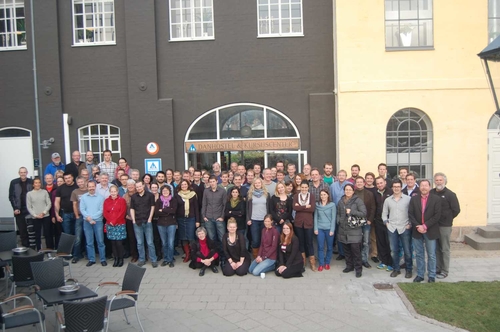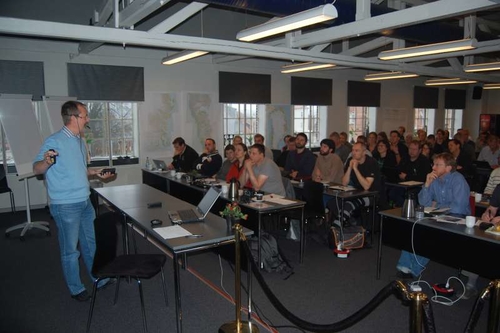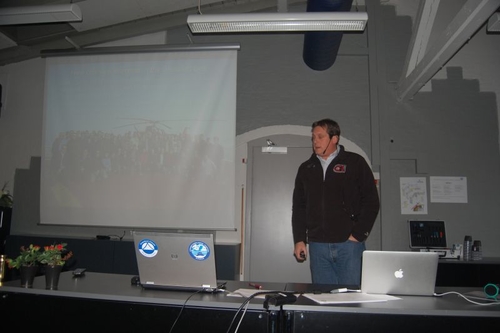The Greenland Climate Research Centre uncovers a melting Arctic Published 23.11.2011

Greenland is getting greener. Grasses, mosses and bushes are appearing in areas that used to be barren and bare. At sea, the ice-free period along the west coast of Greenland has been increased by 25-30 days over the last ten years. Physical processes in the sea ice have a far larger role in the global carbon cycle than hitherto assumed, and in the northern part of the Arctic more intense cyclones destroy the multiyear sea ice, which is several meters thick, creating “rotten ice”, which can be penetrated by ice-enforced vessels.
One hundred researchers and technicians from the Greenland Climate Research Centre have just held the Centre’s annual meeting and presented the latest results from a large number of research projects that are being conducted under the Climate Research Centre.
The annual meeting demonstrated that researchers have succeeded in spanning scientific disciplines and national borders and placing a strong focus on the Arctic. Through a very wide variety of focus areas an understanding is being generated of the processes involved and the ways in which they affect the Arctic environment and living conditions for Arctic populations. The annual meeting provided rich opportunity for inspiring scientific discussions across different research areas; from production of the greenhouse gas methane in the guts of tiny water fleas to socioeconomic issues elucidating the ways in which inhabitants of the Arctic areas handle their changing living conditions.
Research efforts have been strongly enforced through close collaboration with University of Manitoba and the Canadian network ArcticNet, who spoke at the annual meeting about the many opportunities for cooperating with regard to logistics and research in Arctic waters. In addition, an Arctic climate centre under Aarhus University, headed by Professor Søren Rysgaard from the Greenland Institute of Natural Resources, will open in early 2012. The axis through Greenland, Denmark, and Canada will be the backbone of the organization “Arctic Science Partnership”, which is to co-ordinate the many Arctic research projects in the three countries, communicate the results to decision makers and the public, and ensure that a permanent high-quality scientific research environment is established in Greenland. In addition, the plan is to establish a natural science education in Greenland.
The next joint effort in the Climate Research Centre and the partners in Arctic Science Partnership will be a joint research campaign in Young Sund, North East Greenland in March 2012. Here, researchers from 10 countries will join forces across disciplines in order to gain an understanding of how polynias (open-water areas in sea ice) play a role in the transport of salt and carbon dioxide to the deep sea. A factor which is essential to the development of future ocean currents and temperatures.

At the meeting, research groups under the Climate Research Centre presented the status of their projects. Leif Toudal Pedersen from Centre for Ocean and Ice at the Danish Meteorological Institute.

Martin Fortier, Executive Director of ArcticNet describes the network, which is a co-operation between 30 Canadian universities.

